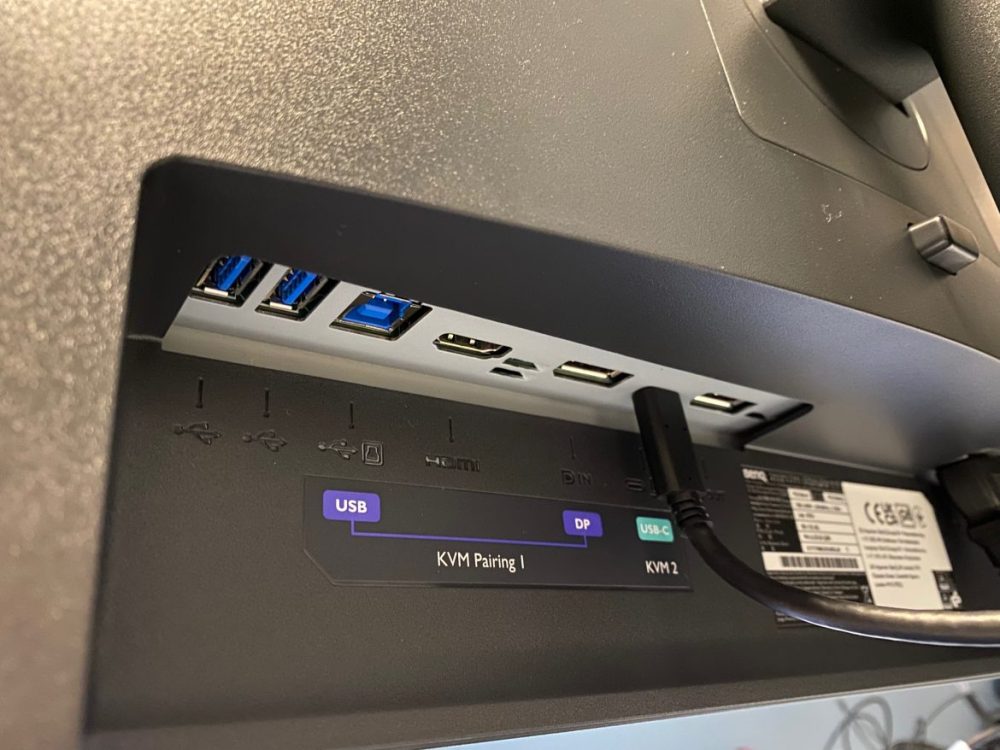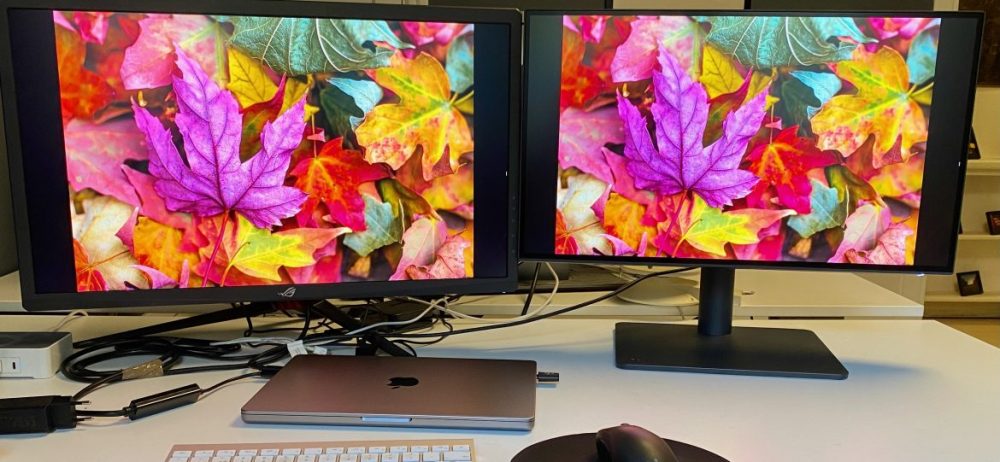TL;DR
BenQ's PD2506Q monitor aims for designers and creators, boasting excellent image quality with 2K resolution and solid color accuracy (100% sRGB/Rec.709). It features USB-C with 65W Power Delivery and useful KVM functionality, making it great for productivity workflows. While its HDR is decent, it's limited by 8-bit color and 400 nits. The 25-inch size feels a bit dated, and some input placements could be more ergonomic. Despite a higher price, it's a strong contender for professionals needing accurate colors for design and office work. Curious if this BenQ display is the right fit for your creative setup? Read on for the full review!
The PD2506Q is a new monitor from BenQ, targeting designers and content creators. It offers impressive image quality, though its price point raises certain considerations.
Design
The first impression of the BenQ PD2506Q is its clean and stylish design, aligning with its focus on design professionals. The slim bezels contribute to a refined aesthetic, and cables can be efficiently managed behind the stand. The upward-facing input placement, common for wall-mounted displays, presents some ergonomic challenges. Accessing the connections requires either inverting the monitor or maneuvering beneath the desk.

Connections
The BenQ PD2506Q provides a comprehensive selection of connectivity options. A USB-C port with Power Delivery (65W) readily supports powering and charging modern laptops. The inclusion of multiple USB 3.0 ports allows for connecting hubs and accessories. However, the amperage of these ports appears limited; our wireless mouse receiver failed to operate reliably (a common limitation across many monitor manufacturers, or potentially a high power draw from the SteelSeries receiver).
BenQ PD2506Q – Image Quality
The initial impression upon powering on the BenQ PD2506Q is its excellent picture quality. However, the 25″ screen size feels comparatively small by today’s standards. While 24″ was once a common monitor size, 27″ has largely become the standard. Compared to reference displays such as the Dell P2720DC or an Asus gaming monitor, the BenQ PD2506Q’s screen area appears noticeably smaller than the two-inch diagonal difference would suggest.
The panel resolution is 2K (2560 x 1440p), which provides ample detail for most applications. While 4K resolution is increasingly prevalent, it typically requires a 30″+ screen size for comfortable long-term use. Similar to the Asus PA279CV ProArt Display, this monitor undergoes CalMan calibration to ensure accurate color and luminance values (under specific ambient lighting conditions). While the HDR (HDR10) implementation delivers a bright and crisp image, it is limited by its 8-bit color depth and 400 nit peak brightness. This provides a degree of enhanced dynamic range but falls short of true HDR, which necessitates 10-bit depth and luminance levels approaching 1000 nits.

The monitor’s refresh rate is 60 Hz, which is suitable for design and office tasks, but may be limiting for gaming and video editing (though video playback remains smooth). The 5ms response time is commendable in this category. The IPS panel offers wide viewing angles of nearly 180 degrees and minimizes distracting reflections. The color gamut covers 100% of Rec. 709 (SDR), 100% of sRGB, and 95% of P3, with a Delta E deviation of less than 3. This performance aligns with expectations for a monitor in this segment and price range, although professional-grade monitors typically achieve a Delta E value below 1.
The display supports ICC profile loading for custom color calibration.
Usability
The BenQ PD2506Q provides a positive user experience. The menus are logically structured and easily navigable via the rear-mounted joystick. A wide range of image settings are available to customize the display to individual preferences and application requirements. Tasks such as web design, Office productivity, and general browsing are comfortable and easy on the eyes, irrespective of ambient lighting conditions (a blue light filter is integrated). The monitor can also be rotated to a portrait orientation for specific workflows.
The display incorporates two 2.5W speakers for basic audio monitoring of videos, and a conveniently located 3.5mm headphone jack is positioned on the side. KVM functionality is also supported, enabling the connection of multiple computer systems (e.g., a desktop and a laptop) with shared USB peripherals, with seamless switching between the connected devices.
Power consumption is a relevant consideration. The BenQ PD2506Q can draw up to 170W at its peak, but averages around 36W during typical operation and consumes a standard 0.5W in standby mode.
Summary
The BenQ PD2506Q performs well and meets its core specifications. With its 2K resolution and HDMI 2.0, it is clearly targeted toward users focused on office productivity and design-related tasks. The monitor excels in these applications, delivering impressive image quality and well-implemented HDR support. However, its price point, approximately 10,000 Swedish kronor in Sweden, suggests that its primary audience will be professionals or enthusiasts who require accurate color reproduction for video or image editing and demand a comfortable viewing experience for extended periods. Users seeking an everyday monitor for general use or gaming may find alternative options in a lower price bracket more suitable. However, for users within the target demographic, the BenQ PD2506Q presents a compelling choice and earns a new reference designation in its category.
BenQ provided a review unit for this evaluation. The supplier of the material has no editorial influence on our reviews.

